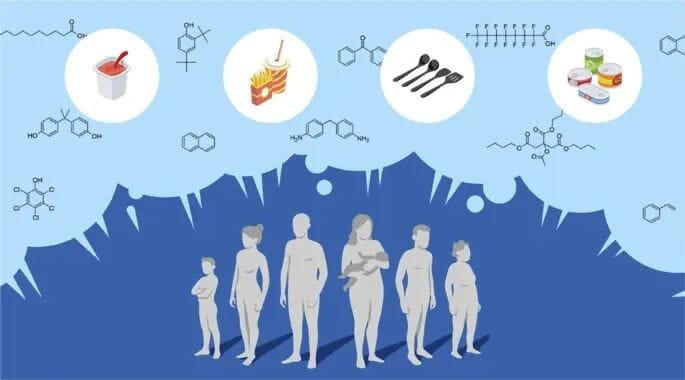On September 17th, local time in Switzerland, a multinational team of scientists led by Jane Munk, a scientist in the food packaging industry, published a paper titled “New Food Package Composition Study and Database: Impacts of Food Exposure Chemicals on Humans”.
The paper reveals a shocking statistic: of the more than 14,000 chemicals known to be used in food packaging materials today, 3,601 have been detected in humans, or about 25 percent of the total. Although scientists are not completely sure how these chemicals are transferred from food packaging to the human body, and the dangers of some chemicals to the human body have not yet been fully exposed, scientists emphasize that high temperatures tend to make the chemicals leach into the food more quickly, and thus into the human body.

Brigitte, one of the paper's lead co-authors, said the increasing number of food package ingredients now being detected in human blood, urine, breast milk and other specimens illustrates how little scientists previously knew about how the chemical composition of packaging materials affects the human body.
A few patterns that are relatively easy to identify through analysis are: the use of packaging such as take-out containers to heat up hot foods tends to accelerate the entry of these chemicals into the body; and foods that are high in fat and acid are more likely to absorb chemicals from packaging materials.
In addition, Munk says that the smaller the food package, the more likely it is to create contact between the food and the package material. Once, she got a meal on an airplane that consisted of a salad in which olive oil and vinaigrette came in small 15-milliliter plastic bottles. As she watched her neighbors pour these dressings over their salads and stir them, she thought to herself, “I wouldn't do that anyway.”
Zoller, professor emeritus of biology at the University of Massachusetts Amherst, said, “Food packaging is a significant source of human exposure to chemicals, but we haven't previously given much thought to this piece. This study fills in the gaps for us, at least by showing that a variety of chemicals are entering the human body unregulated.”
Munk says that most of the chemicals leaching out of food packaging come from plastics, “but a lot of people don't realize that the worst can come from recycled paper and plain cardboard.” She explains that plain cardboard, recycled paper made from recycled materials, or plastics used in food packaging can lead to non-food-grade inks being mixed into the food, which increases the chemical risk the human body faces.
Munk called for the need for the industry to better test food packaging and further standardize which packaging materials are safe. “We need to think about constructive ways of how to ensure these materials are safe.”

